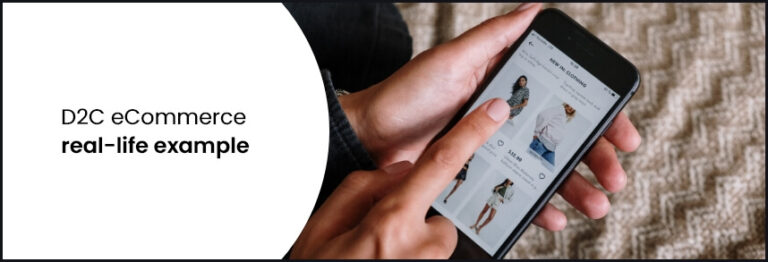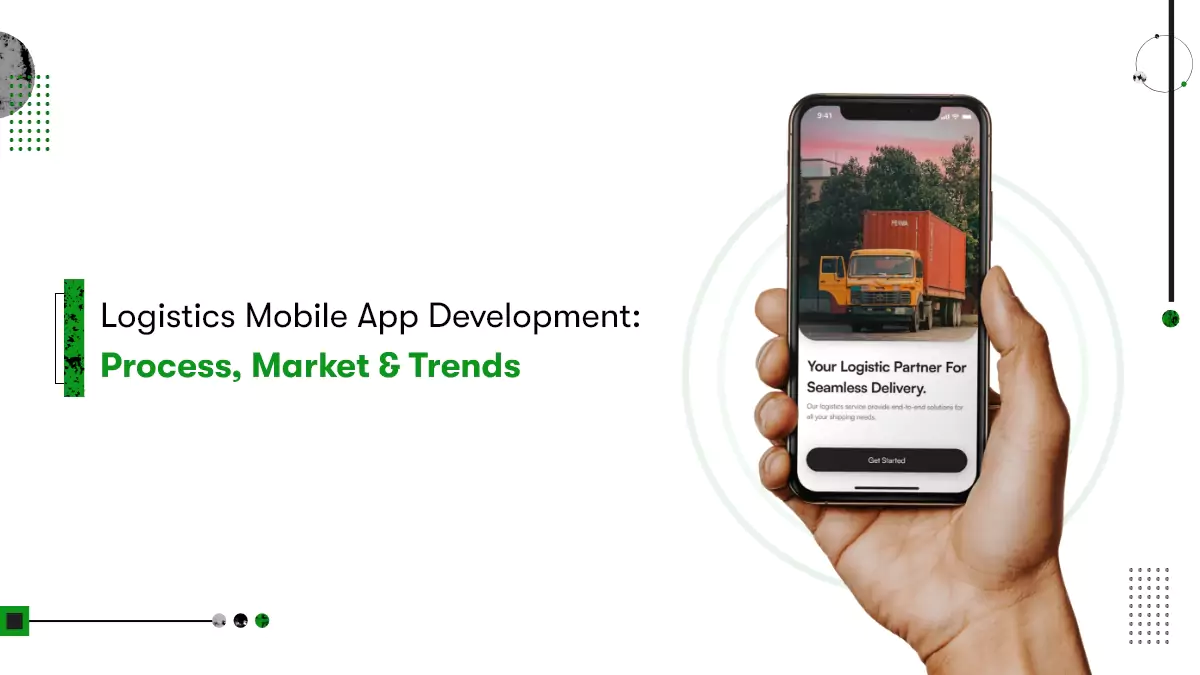Are you sick of sharing your margin with your distributors? Do you think distributors are stealing your business thunder?
Well, the universe has heard your problem, and the era has come when you can sell, communicate, and offer personalized experiences directly to your customers. Yes, there will be no agents between you and your audience if you take a leap towards D2C, aka Direct-to-customer eCommerce.
You must be wondering about B2B, B2C, and now there’s one more business vernacular D2C. But unlike Business-to-Business and Business-to-Customer, with Direct-to-customer, you engage with your prospective customers directly.
For example, in B2B, you sell your product to other businesses, and they rebrand products as their own and sell them in the marketplace. In contrast, B2C intermediary retailers generally sell your products along with your competitors’.
In D2C, however, all the mediators are gone for good, ensuring faster-to-market products and reducing costs. Further, D2C focused online-first companies tend to offer the most streamlined, convenient, and offhand shopping solution, embodying an alternative to a physical retailer.
What’s more? There’s a fair rumor that millennials are so into D2C platforms. For your information, Millennials (aged 25 to 34 years) are the largest group of digital buyers. The generation expects brands to take a stand on values. Hence, I would dare to say; millennials are likely to trust the product more when it comes directly from its origin.
What is D2C? How exactly does it work?
Whether online or offline, traditional business models go from manufacturers to wholesalers to distributors to retailers and then to customers. Conversely, D2C is a business model in which a manufacturer directly approaches its consumers to sell products/services without relying on distributors or retailers.
Brands that sell online directly to customers are also termed ‘Digitally Native Vertical Brands (DNVBs).’
The Direct-to-customer model is a bounteous solution for producers and innovators to have more control over their sales and customer engagement. The distributors will no longer dictate your business. Furthermore, you will be accountable for maintaining the entire supply chain, including planning, producing, marketing, sales, delivering, and return (just in case).
Nonetheless, to reach out to a broader audience directly, you need an mobile app development solution. In other words, you have to create a portal to sell and market your products online directly to your customers. Given the increasing number of mobile device users, there wouldn’t be an any better solution than a D2C mobile app.

Benefits Come With D2C Portal Development
Direct interaction with customers from start to finish also enables your business to collect all the information of customers and operations. You can integrate the data on one ERP platform and obtain novel insights and strategic advantages in time.
We can talk about D2C benefits over other business frameworks literally for hours, but that cannot be possible here. So, let us point out the chief advantages of D2C for now.
- No middlemen = more profit which is obvious;
- Direct access to targeted customer data with a clear picture of buyer behavior, making it easier to offer a unique and personalized experience;
- Faster time-to-market products mean More room for product testing among a specific demographic, gathering feedback, and tailoring the product as per market demand and customer needs;
- Higher control over brand reputation as you decide how to market your products;
- Build and nurture relationships with your customers and gain more loyal customers.
D2C eCommerce real-life example
Although the model is relatively new, online shopping habits are causing the D2C market to prosper. That is to say; many brands have started to leverage the approach already. This can be good for you as you can inspire from their success and learn from their mistakes.
So, to ignite that inspiration spark, we will look into brands doing great after taking the leap with D2C selling campaigns.
Dollar Shave Club
The brand started to create affordable men grooming products (e.g., razors) when they were pointlessly expensive. They cut out the third-party and adopted a subscription-based D2C model to sell this everyday product at a reasonable price. For example, customers have to buy any product at a minimal cost of $1 for the first time to be a member of the club.
DSC’s main focus was to develop a direct relationship with the customers. Therefore, to market their products, they relied on video marketing featuring the CEO. In just 48 hours of the video, around 12,000 people signed up for the Club membership. Ever since the company has been growing without highly depending on distributors.
Away
A luxury luggage brand that generated more than $12 million within sales in the first year of launch. In addition, Away also generated a whopping $125 million revenue in less than three years. How? Away did not jump right into the market. They researched and found distribution and markup retailer charges were making luxury suitcases more expensive.
Hence, the suitcase and travel accessories producing brand took to D2C strategy. Using a direct-to-customer model, Away offers its items at a fair price that customers may pay without compromising quality. As a result, they now could communicate with their customers directly that helps them improve their products following customer feedback. How cool!
There are many such brands you must check up on to ensure if the D2C model is what you are looking for. Find here a short list of D2C-based brands as our small contribution to your in-depth research.
Casper is a $1.1 billion value brand selling sleep products online and in retail locations with around 200+ stores.
Warby Parker, an eyewear brand, is another direct-to-consumer (D2C) agency with a valuation as high as $5 billion. They offer a lower price by designing products in-house and selling directly to consumers through its website, mobile app, and stores, eliminating the middleman and any unnecessary markups.
Glossier is a beauty brand that initially started and succeeded as a blog and turned into a direct-to-consumer cosmetic company, leveraging online content and community to fuel a superior shopping experience.
Blue Apron, an American D2C ingredient-and-recipe meal kit company, serves its customers directly through a mobile app and gains visibility and sales by employing content marketing campaigns.
See? Big to small brands from diverse industries have started to approach their customers with the D2C model. Do you want to, too?
What do you need to create a Direct-to-consumer platform?
To operate your business over a direct-to-consumer platform, you might need the below weapons in your arsenal.
BUSINESS PLAN
Without knowing who you are targeting, you cannot create a successful business model. So, how do you know who to target? Market research. Define your niche and study the products that exist in the market and customer responses toward them. Most importantly, look for the problems customers face with the available solutions. Remember Away suitcase brand, for example, and how it determines and eliminates the price tag was the problem.
CUSTOMER RELATIONSHIP MANAGEMENT
Customer buying behavior changes over time. And it’s a key to success for a D2C brand to perceive what their customers need at what time. Hence, you need a CRM system proficient in generating valuable customer insights. Because there is no better solution than CRM to understand your customer behavior.
TECHNOLOGY
Due to budget constraints, it’s impossible to open retail stores around your targeted location while you are a startup. That’s where technology comes in handy. Rather than investing in real estate, you should opt for a digital solution like D2C portal development.
Take Warby Parker and Blue Apron as proof of this. In addition to retail stores, they serve their customers through websites and mobile apps.
Above all, research says 65% of global online transactions occur on mobile devices. Also, there are over 5 billion mobile users worldwide, and half of them use smartphones.
Thereupon, by using technology to direct sell, you can scale your service comparatively faster. And since you are directly selling to your customers, it automatically boosts the authenticity of your brand and gains loyal customers. Noteworthy, make sure you hire qualified mobile app developers to create a user-friendly and high-performance mobile app.
SUBSCRIPTION-BASED MODEL
The Subscription model is a heck for driving recurring revenue coupled with high customer retention rates. We have big D2C brands like Dollar Shave Club, Blue Apron, Honest Company that offer a cancel-any-time subscription plan.
Looking into Dollar Shave Club’s retention number, we found that after 12 months, about 50 percent of subscribed customers still use the service. On the other hand, they retained 25% of all sign-ups even after two years. Thus, the model has been proven many times to save your consumers effort, time, and money. Ultimately, it results in exponential business growth as well.
Features for D2C portal development
Following the business model, you prepare a project requirement document. The document elaborates what features your portal will have and technologies to use to develop outlined functionalities.
Let’s take a look at the basic features every D2C application must have:
- Customer registration/login
- Home page
- Customer profile
- Products – Include types of products, bundling
- Product Categories
- Search Bar
- Filtering
- Pricing
- Discounting
- Order history
- Payments options
- Shipping Details
- Recommendations
- Returns Process
- Security/Authentication
By and large
As a consequence of constant supply chain disruptions, manufacturers are turning to the magical business model— D2C. Besides, Digital transformation is a significant factor, providing companies with robust solutions like mobile apps to connect customers directly. Together with paid advertising, email marketing, SEO practices, and of course, social media marketing, companies market their products where their customers are.
D2C not only eliminates intermediaries from the business but innovates the way brands operate, sell, and grow. Not to mention, being in direct contact with customers helps brands offer superior experiences. Now that you know much about the direct-to-consumer model, would you plunge into this new trend?














 Contact Information
Contact Information